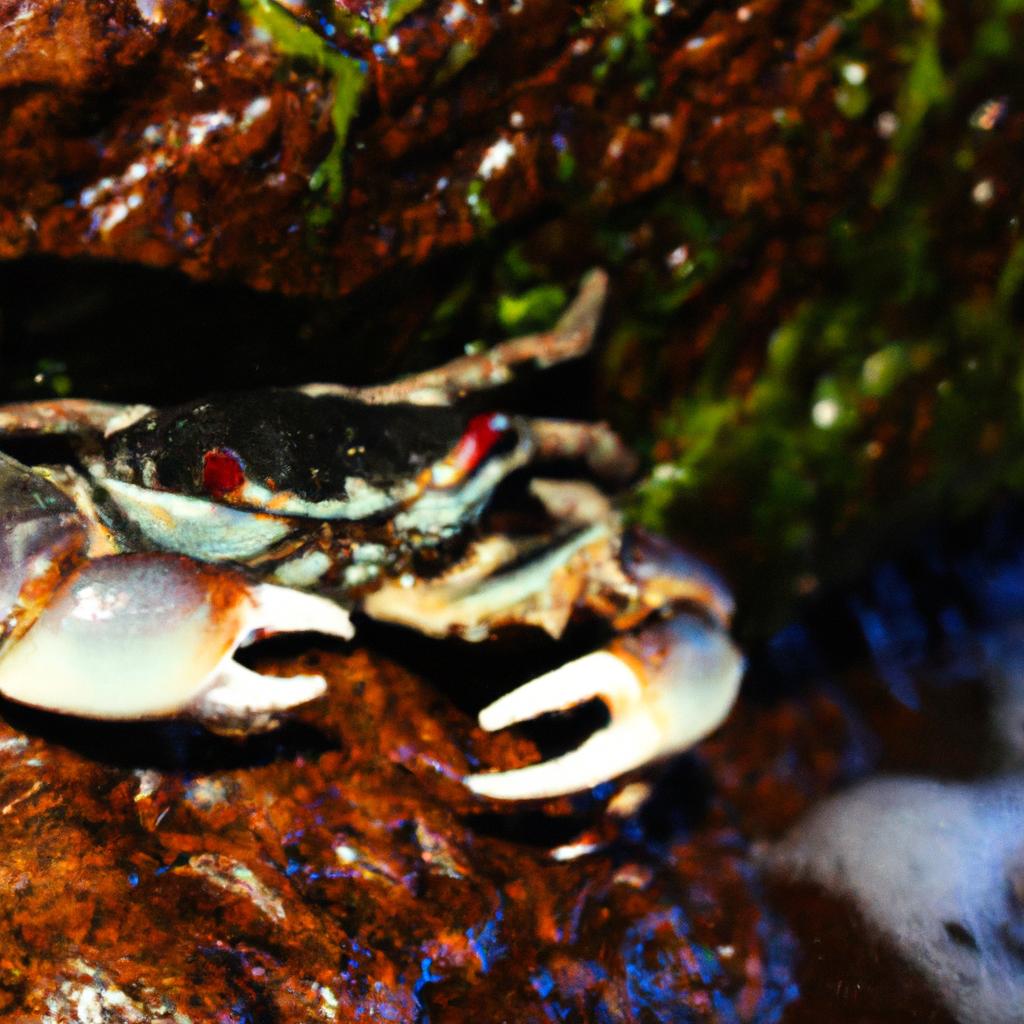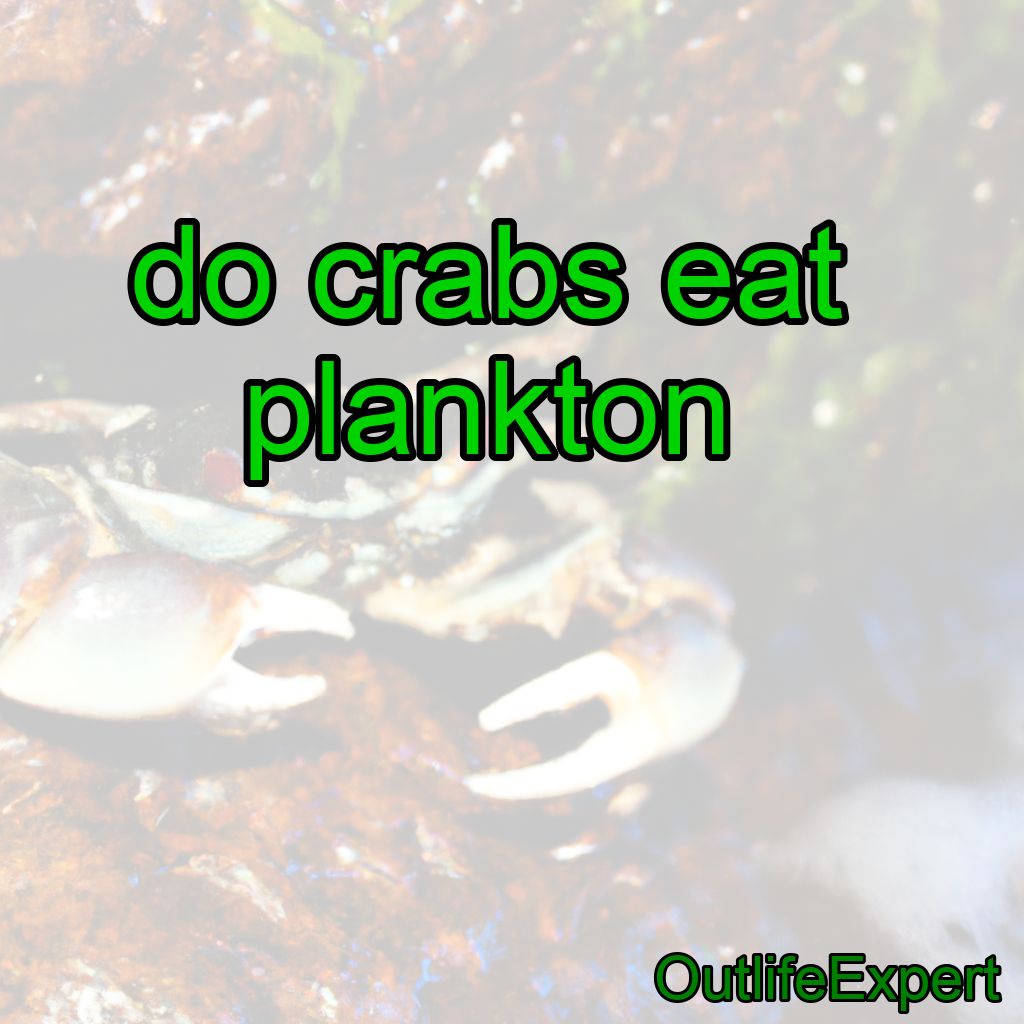As a marine life enthusiast, I’ve always been fascinated by the diverse and intriguing creatures that inhabit our oceans.
Among them, crabs are a particular favorite of mine.
Their unique appearance and behavior make them stand out among other marine animals, and I’ve spent countless hours observing them in their natural habitat.
One question that often pops up when discussing crabs is:do crabs eat plankton?To answer this question, I delved further into the diet of these captivating crustaceans.
Contents
The Answer: Yes, Some Crabs Do Eat Plankton
Crabs do eat plankton, but not all species have the same diet.Some crabs are primarily planktivorous, meaning they feed predominantly on plankton, while others have a more varied diet that includes a mix of plankton, algae, and other small organisms. In this post, we’ll explore the different types of crabs, their feeding habits, and the role of plankton in their diet.
What Are Plankton?
Before diving into the world of crabs, let’s first understand what plankton are. Plankton are microscopic organisms that drift or swim weakly in aquatic environments, both in freshwater and marine ecosystems.
They are the base of the aquatic food web and are crucial to the survival of many marine animals. Plankton can be broadly classified into two categories: phytoplankton and zooplankton.
Phytoplankton are microscopic plants, while zooplankton are tiny animals that feed on phytoplankton and other zooplankton.
Types of Crabs and Their Diets
There are over 4,500 species of crabs in the world, and their diets can vary significantly depending on their habitat and specific feeding adaptations. Here are some common types of crabs and their typical diets:

Blue Crabs
Blue crabs are found in the Atlantic Ocean and the Gulf of Mexico. They are opportunistic feeders, meaning they will eat almost anything they can find.
Their diet includes plankton, algae, small fish, and dead organisms. Blue crabs use their powerful claws to crush and tear their prey.
Hermit Crabs
Hermit crabs are known for their unique habit of occupying empty shells for protection.
They are omnivorous scavengers, feeding on a wide range of food sources such as plankton, algae, dead organisms, and other small animals.
Hermit crabs use their specialized mouthparts to filter and consume plankton from the water column.
Fiddler Crabs
Fiddler crabs are small crabs that inhabit sandy or muddy intertidal zones. They are predominantly herbivorous, feeding on algae, detritus, and other organic materials.
However, they may occasionally consume small amounts of plankton, especially when algae are scarce.
Pea Crabs
Pea crabs are tiny parasitic crabs that live inside the shells of mollusks like oysters and clams.
They are primarily planktivorous, feeding on plankton and other small particles filtered by their host.
When and How Do Crabs Eat Plankton?
Crabs that consume plankton typically do so by filtering the water through their mouthparts or gills, trapping and ingesting the tiny organisms. This method of feeding is known as filter feeding or suspension feeding.
The frequency and timing of feeding can vary depending on the crab species and availability of plankton in the water. Some crabs feed continuously, while others only feed during specific times, such as at night or during high tide.
Why Do Crabs Eat Plankton?
Crabs eat plankton because they are a rich and readily available food source in many aquatic environments.
Plankton are abundant, easy to catch, and provide essential nutrients for the crabs’ growth and reproduction.
For crabs that primarily feed on plankton, their feeding adaptations are specifically designed to capture and consume these tiny organisms efficiently.
Do All Crabs Eat Plankton?
Not all crabs eat plankton. Some crabs, like the stone crab and the king crab, are carnivorous and feed primarily on other animals, such as fish, mollusks, and other crustaceans.
These crabs have strong claws and other adaptations that allow them to hunt and capture their prey effectively.
Conclusion: Crabs and Plankton
In conclusion,some crabs do eat plankton, while others have more varied diets that may include plankton as a smaller component of their overall food intake.
Crabs consume plankton because they are a rich and readily available food source, providing essential nutrients for growth and reproduction.
The specific feeding habits of crabs can vary greatly depending on their species and habitat, making these captivating crustaceans an intriguing subject for further exploration.
FAQs
Can crabs see plankton?
Crabs have eyes that are capable of detecting plankton, but their ability to see them may vary depending on the species of crab and the size and type of plankton.
Can crabs see what they eat?
Yes, crabs have compound eyes that allow them to see their food.
Can crabs see their food?
Yes, crabs have eyes and are able to see their food.
Do crabs eat planktonic algae?
Yes, some species of crabs do eat planktonic algae as part of their diet.
Can crabs see the plankton that they eat?
Yes, crabs have good eyesight and are able to see the plankton that they eat.
Do crabs hate planktons?
Crabs do not hate plankton as they are known to feed on planktonic organisms as part of their diet.




